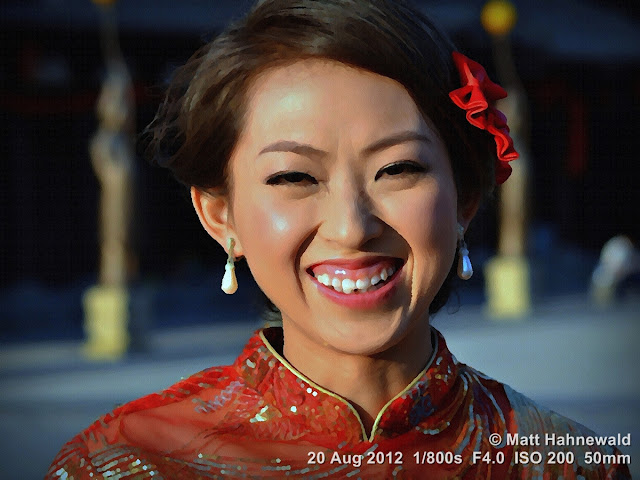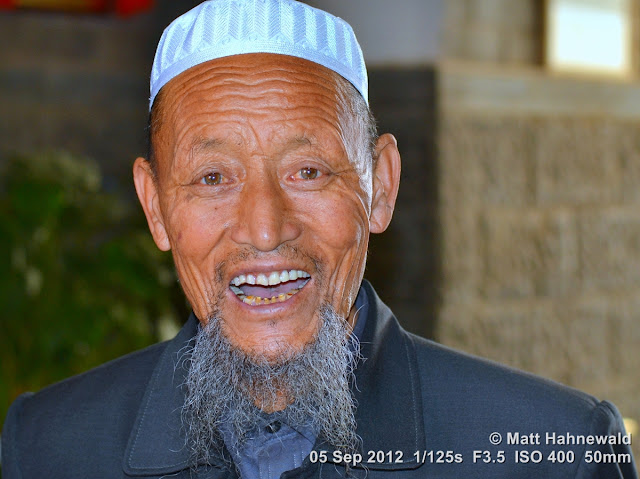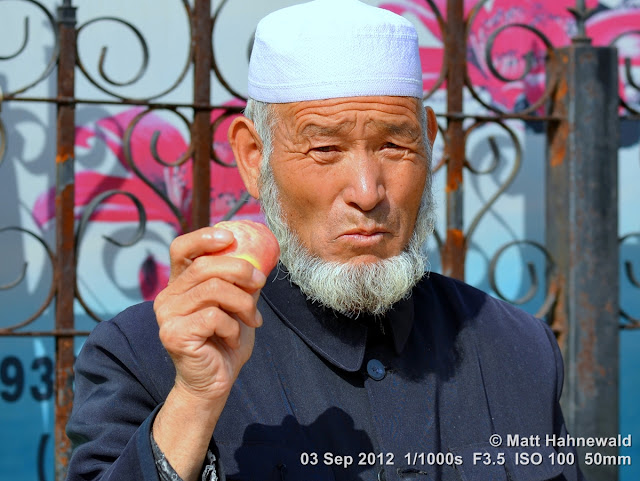Pictorialism
is the name given to an international style and aesthetic movement that
dominated photography during the late 19th and early 20th century. It refers to
a style in which the photographer has somehow manipulated what would otherwise
be a straightforward photograph as a means of "creating" an artistic image
rather than simply recording it.
The distinctive pictorialisation filters of PhotoScape (coloured pencil, watercolour pencil, impressionistic, pastel, pen, water painting, oil painting, pencil, cartoon, colour and monochrome engraving) provide a wide array of choices for somebody who wants to try digital pictorialisation effects on a photo. It requires experimentation and eventually boils down to the photographer’s style and personal preference. As usual, some people will love it, others will hate it…
Below, the street portraits of Chinese people in their traditional costumes have been modified with a combination of PhotoScape's oil-painting and water-painting filters, "best" viewed at zoom level 1:1.
The distinctive pictorialisation filters of PhotoScape (coloured pencil, watercolour pencil, impressionistic, pastel, pen, water painting, oil painting, pencil, cartoon, colour and monochrome engraving) provide a wide array of choices for somebody who wants to try digital pictorialisation effects on a photo. It requires experimentation and eventually boils down to the photographer’s style and personal preference. As usual, some people will love it, others will hate it…
Below, the street portraits of Chinese people in their traditional costumes have been modified with a combination of PhotoScape's oil-painting and water-painting filters, "best" viewed at zoom level 1:1.
"Photographers are failed painters."
(Paul Theroux)



























